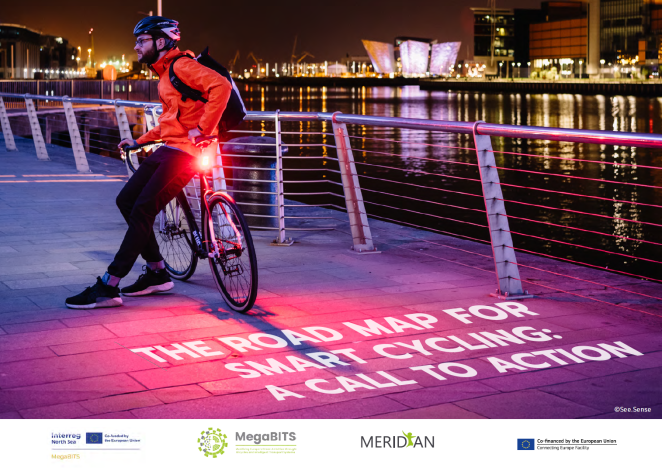A new roadmap for smart cycling that lays out the steps needed to integrate digital technology into urban cycling.

The recently released European Roadmap for Smart Cycling outlines a clear and compelling strategy for integrating digital tools into cycling infrastructure and policy across Europe. It’s more than a wishlist of tech upgrades—it’s a blueprint for transforming how cities approach cycling as a serious, data-driven part of the transport mix.
What makes this roadmap significant isn’t just the technology it describes, but the way it reframes cycling in the context of connected mobility. For too long, cycling has been treated as low-tech and low-priority. This roadmap shifts the narrative, positioning bikes not as an afterthought in mobility planning, but as fully integrated components of smart transport networks.
The observations, ideas and strategic vision of this roadmap is the fruit of two European funded projects in the area of cycling and ITS: The MegaBITS project and the Meridian project. Input has been provided by project partners and external stakeholders in order to ensure the greatest representativity, diversity of opinions and practicality of the proposed next steps.
The Missing Digital Layer for Cycling
At its core, smart cycling refers to the use of intelligent systems—like real-time traffic data, connected devices, and cooperative safety alerts—to improve the experience, safety, and practicality of cycling. It’s the cycling equivalent of the digital infrastructure already commonplace for motor vehicles.
That means things like apps that adjust traffic lights in favour of cyclists, digital incentives for commuting by bike, and warning systems for hazardous road conditions. It also means using floating bike data and infrastructure sensors to build more responsive, evidence-based policy at the city level.
How Will this Roadmap Have an Impact on Cycling?
The roadmap arrives at a critical moment. Cities are under pressure to reduce emissions, cut congestion, and reclaim public space from cars. E-bikes adoption continues to grow, cycling is rising in political relevance, and climate targets must be adhered to. Yet, while cars get connected systems and real-time data flows, cycling has largely been left out of the digital conversation.
This roadmap changes that. It sets out a path for integrating smart cycling into existing transport frameworks—making sure that cycling isn’t just safer or more convenient, but fully connected. If successful, it could help rebalance urban transport systems by making the bike not just viable, but the preferred mobility option.
The roadmap doesn’t overpromise. It acknowledges barriers: fragmented data, funding gaps, privacy concerns, and the slow pace of regulatory change. But it also makes a persuasive case that none of these are deal-breakers. With coordinated effort, smart cycling can unlock major gains in safety, sustainability, and urban quality of life.
Next Steps
At a time when cities are rethinking how people move, this roadmap makes a simple but overdue point: cycling deserves the same digital investment and strategic attention as any other mode of transport. If cities want healthier, safer, and more efficient mobility systems, making cycling smarter isn’t a ‘nice to have’—it’s a ‘must have’.
To read the Roadmap, click here
To read the full report ‘Gearing Up for Smart Cycling’, click here
